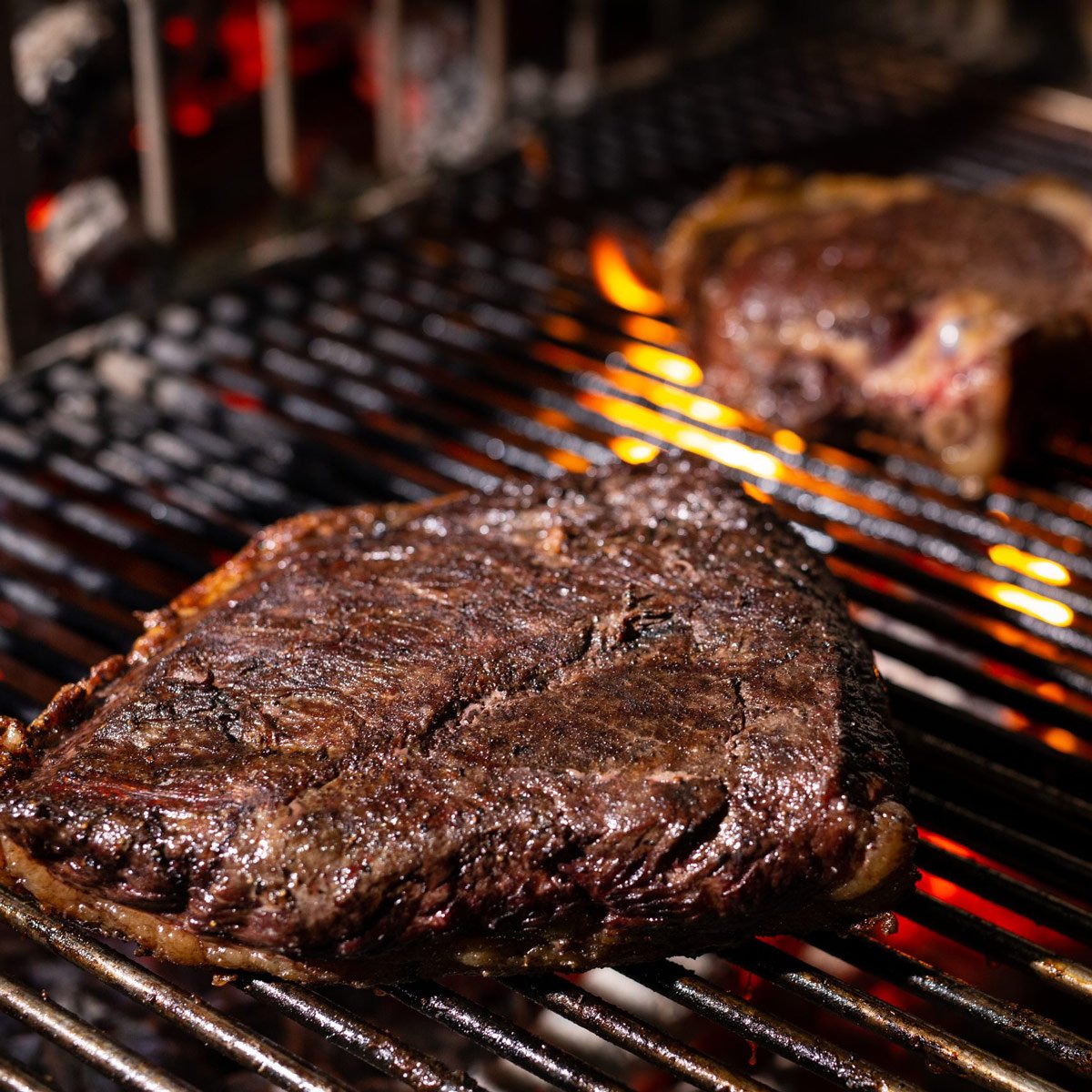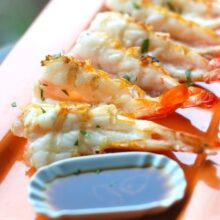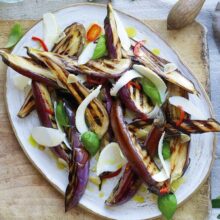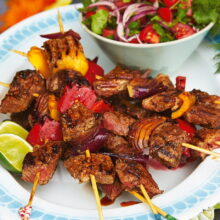Grilling Basics

Whether you’re a grilling expert or a beginner, there are a few important grilling basics that you should know before you start to cook. These are things like: how to handle flare-ups, how to set up a two-zone fire, and how to replace a lot of unitasker gadgets with skewers.
Direct vs indirect grilling
When cooking meat on a grill, there are two basic methods of cooking: direct and indirect. Which one you choose will depend on what type of food you’re cooking, and how long it takes to cook.
When cooking over direct heat, the grill is directly above the heat source, and your food is cooked quickly. This is the method that works for most types of meat. However, you will need to be careful because the outside of the meat can burn before the inside is safe.
When cooking over indirect heat, the food is placed on the opposite side of the grill. This helps the meat get cooked evenly on all sides. Because the food isn’t directly over the heat source, it can take longer to finish. In addition, it is a good idea to use a lid for your grill to prevent burning.
Indirect methods are generally best for longer cooking times, thicker cuts of meat, and delicate foods. They are also ideal for slow-cooked dishes.
There are two main methods of indirect cooking, a “two zone” method and a “single zone” method. With the “two zone” method, you can increase the temperature in the indirect zone. This can help increase the juiciness in your food. You can raise the temperature of the indirect zone by adding more charcoal.
The “single zone” method is better for smaller amounts of food. You can also add a drip pan, a heavy cast iron pan, to divert the rising heat and drippings from the food. This keeps the grill clean and helps catch the drippings that may not go through the lid. You can also turn the flame down when cooking on the indirect side of the grill to avoid dryness.
Both direct and indirect grilling methods are popular ways to cook. Choosing which to use is a simple and important part of becoming a good griller. Knowing which technique to use will also make your food taste better.
Direct and indirect methods of cooking can be used with either a gas or a charcoal grill. They are both great ways to prepare food.
Skewers replace many unitasker gadgets
When it comes to grilling there is a lot to consider, especially in the context of time and space. While there are many tools and gadgets aplenty in our arsenals, choosing the best of the bunch is all about balance. With a little thought you can achieve a gourmet grilled meal in the comfort of your own backyard. Of course, with the proper equipment and a bit of practice, you can eat well on the cheap as well. So what are you waiting for? Check out this list of the best grilling essentials to make sure you have the best grilling experience possible. The last item on this list is a good quality charcoal grill. As for other equipment, you can’t go wrong with a quality hood vent, cast iron skillet, a cast iron pan and a pair of high-quality spatulas. Finally, the kitchen is not complete without a decent selection of spices and seasonings. With these in the mix, you will be able to cook your way to culinary greatness. The key is to have a well-stocked pantry.
Setting up two-zone fires
When grilling you can use a two zone fire to save fuel and cook more foods at once. This technique is also a great way to grill meats. It is very easy to set up and can be used on most types of grills.
Using a two-zone fire allows you to cook over both direct and indirect heat. This means that you can sear meat on one side and finish it over the other. It is the best method for chicken, steak, and other meats. You can even cook a lobster in this way.
The key to two zone cooking is having an even temperature between the hot and the cool zones. The indirect side should be between 200-300 degrees, and the hot side should be around 500. This will allow the meat to be cooked evenly and prevent flare-ups.
When a flare up occurs, it is a good idea to move the food to the cool side to prevent the heat from burning the outside of the meat. However, it is important to note that flare ups can occur at any time. Keeping an eye on the flames through the air vents will help you to notice a flare-up. If the flare up does not go away, cover the grill to block the oxygen supply. This will effectively extinguish the flare-up.
When setting up your two-zone fire, be sure to place the charcoal in an even layer on the bottom grate. The hot zone should be at least 3 layers deep and the cool zone should be at least 1 layer deep. When the hot coal pile is in place, it should slope to one to two layers toward the center of the grill.
A water pan should be placed on top of the fire to protect the meat from radiant heat. This is not required for any smaller cuts of meat, and is only necessary for large roasts. It is also a good idea to shave off at least 1/4 inch of fat before grilling your steak. This will keep it from getting too dry and flavorless.
Controlling flare-ups
A flare up can be a scary experience. But if you know what to do, you can control flare-ups and have a better grilling experience. There are two main ways to handle flare-ups. The first is to try to prevent them. The other is to put them out if they happen.
Flare ups occur when food is cooked over direct or indirect heat. They may be caused by excess fat or oil dripping onto the flames. To avoid them, clean the grill before cooking and use lean meats. If you must use extra oils, use sparingly.
If you are unable to control a flare-up, you should move the food out of the way. You should also turn off the burners and close the lid. This will cut off the source of oxygen and effectively extinguish the flames.
When the fire is out, you can resume normal grilling duties. However, you will have to keep an eye on it to make sure it doesn’t reoccur. You should also move the food to the cool side of the grill. This will help die down the flare ups more quickly.
If you don’t have an indirect heat source, you can use a conical shape called a flame tamer to catch fat drips. You can also add baking soda or salt to smother the fire. But you should be careful, as adding water to the grease fire is not recommended.
If your grill has a removable pan, you can clean it easily. You can also use a wire brush to remove debris. Then, you can place the cleaned pan on the cool side of the grill. This will burn off the excess fat and grease, preventing a flare up from occurring.
A flame tamer can be very helpful, but it needs to be cleaned regularly. You can also use soapy water to clean the inside of the grill. If you are using a gas grill, you cannot use a spray bottle, as the fuel will be flammable.
Flare-ups are a natural part of grilling. But you can avoid them by keeping your grill clean, choosing lean meats, and using marinades or sauces sparingly.
Did you miss our previous article…
https://notoriousbob.net/?p=2476



